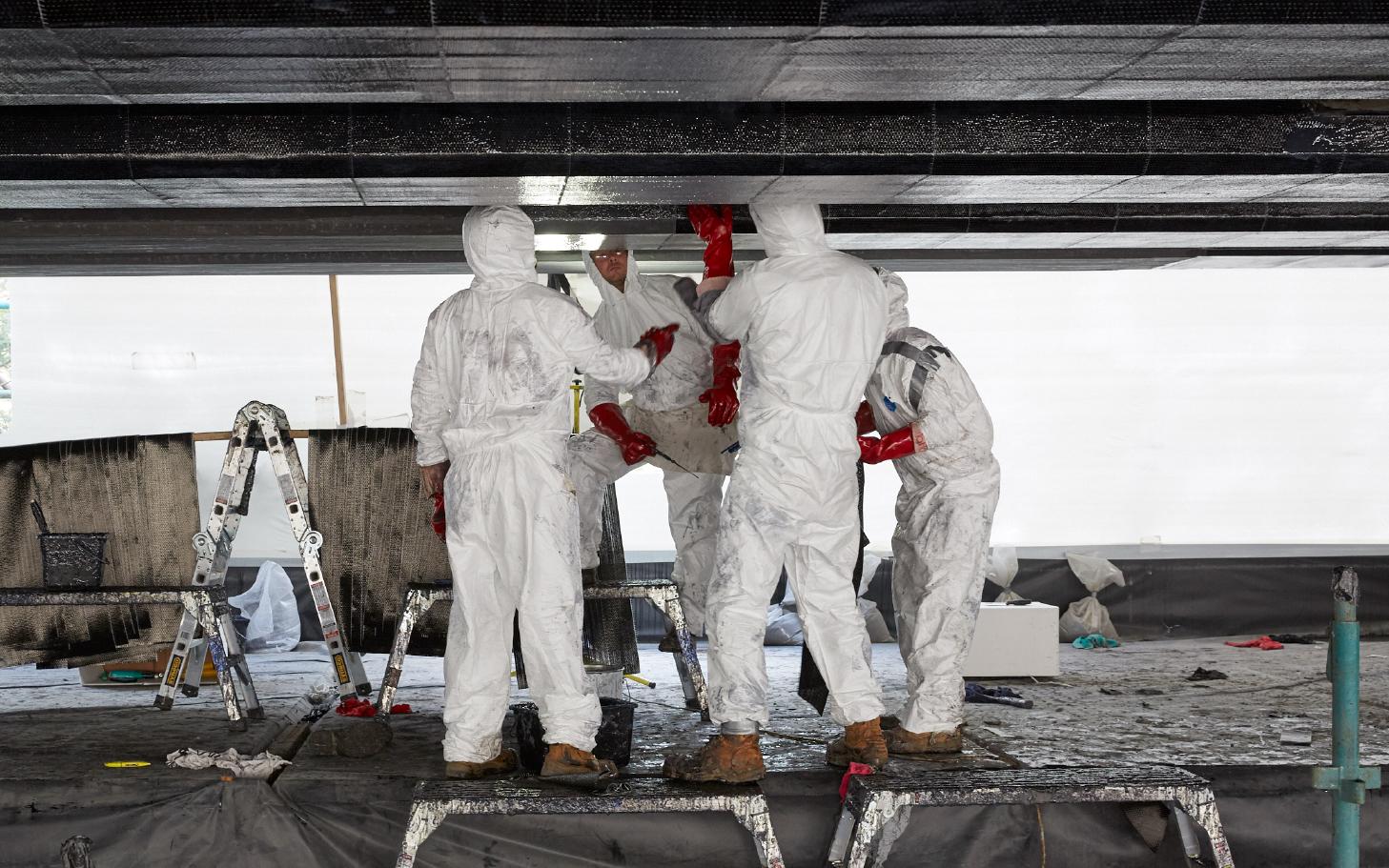- Home
- Sectors
- Civil Infrastructure
- Structural Strengthening
- MasterBrace Laminate
MasterBrace
MasterBrace Laminate
Carbon Fibre Reinforced Polymer (CFRP) System for Structural Strengthening of Concrete and Timber Structures
How Does MasterBrace Laminate Work?
MasterBrace Laminate is a ready-to-use, pultruded carbon fibre laminate, normally externally bonded to structures to provide additional load-bearing capacity. It provides a lightweight, high-tensile strength material (higher than steel reinforcement used in the concrete industry) and is largely utilised for additional flexural reinforcement (i.e., plate bonding) of concrete and timber members as part of the MasterBrace Laminate system.

Recommended Uses:
Increase the flexural capacity of beams and slabs
Increase the general load-bearing capacity (e.g., structural conversion following an increase in loading conditions)
Help reduce deflection of the overall structural element (increase in rigidity)
Help increase the fatigue strength (reduced maintenance)
Help to increase the crack resistance of a structure (increase in durability)
What Are the Unique Features of MasterBrace Laminate?
To add strength and reinforce structures with material that has a high tensile capacity, MasterBrace Laminate enables the traditional technique of plating (with steel plates) to be replaced with extremely light materials that are far easier to install.
What Are the Benefits of MasterBrace Laminate?
Fast and easy installation - reducing overall installation cost of strengthening
Durable - non-corroding even if in contact with moisture
Thin section compared to traditional methods - low profile (thickness) does not impact architectural aesthetics or reduce usable space
Simple design - enables the amount of reinforcement to be calculated concerning the performance required or the flow of stress
Customisable - a range of sizes and grades available to optimise design requirements and suitable for near-surface mounting in grooves
All laminates are supplied with a protective peel-ply to both faces - reducing preparation costs while delivering better adhesion to the substrate and any subsequent coatings